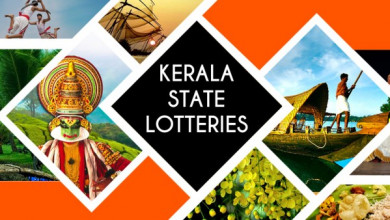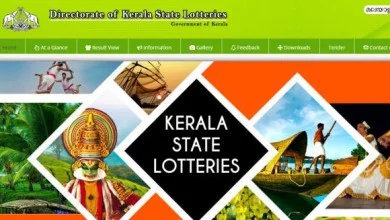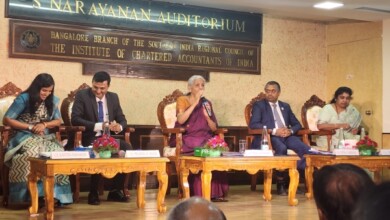Decline in Ground Water Level

Ground water levels in some parts of the Country are declining because of continuous withdrawal necessitated by increased demand of fresh water for various uses, vagaries of rainfall, increased population, industrialization & urbanization etc.
Central Ground Water Board (CGWB) is periodically monitoring the ground water levels throughout the Country on a regional scale, through a network of monitoring wells. In order to assess the long term fluctuation in ground water level, the water level data collected by CGWB during November 2020 has been compared with the decadal mean of November (2010-2019). Analysis of water level data (Annexure) indicates that about 38% of the wells monitored have registered decline in ground water levels, mostly in the range of 0.0 – 2.0 m. Further, about 62 % wells have also registered rise in groundwater levels mostly in the range of 0.0 – 2.0 m.
Water being a State subject, initiatives on water management including conservation & water harvesting in the Country is primarily States’ responsibility. However, the important measures taken by the Central Government for conservation, management of ground water and effective implementation of rain water harvesting in the country are available at the following URL:http://jalshakti-dowr.gov.in/sites/default/files/Steps_to_control_water_depletion_Feb2021.pdf. Some of the important initiatives in this regard are listed below.
Government of India launched Jal Shakti Abhiyan (JSA) in 2019, a time bound campaign with a mission mode approach intended to improve water availability including ground water conditions in the water stressed blocks of 256 districts in India. In this regard, teams of officers from Central Government along-with technical officers from Ministry of Jal Shakti were deputed to visit water stressed districts and to work in close collaboration with district level officials to undertake suitable interventions. In addition ‘Jal Shakti Abhiyan – Catch the Rain’ campaign has been launched by Hon’ble Prime Minister of India on 22 March 2021.
Central Ground Water Board (CGWB) is implementing National Aquifer Mapping and Management program (NAQUIM), which envisages mapping of aquifers (water bearing formations), their characterization and development of Aquifer Management Plans to facilitate sustainable management of Ground Water Resources. The State-wise information is shared with States/Uts for implementation.
Ministry of Jalshakti, Department of Water Resources, RD & GR (DoWR, RD & GR) is implementing AtalBhujalYojana (AtalJal), a Rs.6,000.00 crore Central Sector Scheme, for sustainable management of ground water resources with community participation. AtalJal is being implemented in 81 water stressed districts and 8774 Gram Panchayats of seven States viz. Gujarat, Haryana, Karnataka, Madhya Pradesh, Maharashtra, Rajasthan and Uttar Pradesh.
Central Government supports construction of water harvesting and conservation works primarily through Mahatma Gandhi National Rural Employment Guarantee Scheme (MGNREGS), PradhanMantriKrishiSinchayeeYojana – Watershed Development Component (PMKSY-WDC).
Further, a number of States have done notable work in the field of water conservation/harvesting for sustainable management of water resources. Of these, mention can be made of ‘MukhyamantriJalSwavlambanAbhiyan’ in Rajasthan, ‘JalyuktShibar’ in Maharashtra, ‘SujalamSufalamAbhiyan’ in Gujarat, ‘Mission Kakatiya’ in Telangana, NeeruChettu’ in Andhra Pradesh, JalJeevanHariyali in Bihar, ‘Jal Hi Jeevan’ in Haryana among others.
Government of India in partnership with States, is implementing JalJeevan Mission (JJM) since August, 2019 to provide potable tap water supply of prescribed quality to every rural household in the country by 2024. Under JJM, while planning water supply schemes to provide tap water supply to house-holds, priority is given to quality-affected habitations. While allocating the funds to States/ UTs in a particular financial year, 10% weightage is given to the population residing in habitations affected by chemical contaminants including Arsenic and Fluoride, as on 31st March of the preceding Financial Year.
Since, planning, implementation and commissioning of piped water supply schemes based on a safe water source may take time, purely as an interim measure, States/ UTs have been advised to install community water purification plants (CWPPs) in such habitations, to provide potable water to every household at the rate of 8–10 litre per capita per day (lpcd) to meet their drinking and cooking requirements.
Department of Drinking Water & Sanitation had launched a National Water Quality Sub-Mission (NWQSM) on 22nd March, 2017 as a part of National Rural Drinking Water Programme (NRDWP), which has now been subsumed under JalJeevan Mission, to provide safe drinking water to 27,544 Arsenic/ Fluoride affected rural habitations in the country.
This information was given by the Minister of State for Jal Shakti and Food Processing Industries, ShriPrahlad Singh Patel in a written reply in the LokSabha today.
AS/SK
Annexure
| State-wise Decadal Water Level Fluctuation with Mean [November (2010 to 2019] and November 2020 | ||||||||||||||||||||
| S. No. | Name of State | No. of wells Analysed | Rise | Fall | Rise | Fall | Wells showing no change | |||||||||||||
| 0-2 m | 2-4 m | >4 m | 0-2 m | 2-4 m | >4 m | |||||||||||||||
| No | % | No | % | No | % | No | % | No | % | No | % | No | % | No | % | No | % | |||
| 1 | Andhra Pradesh | 688 | 395 | 57.4 | 92 | 13.4 | 38 | 5.5 | 146 | 21.2 | 12 | 1.7 | 5 | 0.7 | 525 | 76 | 163 | 24 | 0 | 0 |
| 2 | Arunachal Pradesh | 3 | 3 | 100.0 | 0 | 0.0 | 0 | 0.0 | 0 | 0.0 | 0 | 0.0 | 0 | 0.0 | 3 | 100 | 0 | 0 | 0 | 0 |
| 3 | Assam | 158 | 113 | 71.5 | 5 | 3.2 | 2 | 1.3 | 35 | 22.2 | 3 | 1.9 | 0 | 0.0 | 120 | 76 | 38 | 24 | 0 | 0 |
| 4 | Bihar | 536 | 284 | 53.0 | 41 | 7.6 | 4 | 0.7 | 184 | 34.3 | 17 | 3.2 | 6 | 1.1 | 329 | 61 | 207 | 39 | 0 | 0 |
| 5 | Chandigarh | 11 | 3 | 27.3 | 2 | 18.2 | 0 | 0.0 | 5 | 45.5 | 0 | 0.0 | 1 | 9.1 | 5 | 45 | 6 | 55 | 0 | 0 |
| 6 | Chhattisgarh | 700 | 261 | 37.3 | 41 | 5.9 | 15 | 2.1 | 312 | 44.6 | 53 | 7.6 | 18 | 2.6 | 317 | 45 | 383 | 55 | 0 | 0 |
| 7 | Dadra & Nagar Haveli | 17 | 11 | 64.7 | 2 | 11.8 | 1 | 5.9 | 3 | 17.6 | 0 | 0.0 | 0 | 0.0 | 14 | 82 | 3 | 18 | 0 | 0 |
| 8 | Daman & Diu | 9 | 7 | 77.8 | 0 | 0.0 | 0 | 0.0 | 2 | 22.2 | 0 | 0.0 | 0 | 0.0 | 7 | 78 | 2 | 22 | 0 | 0 |
| 9 | Delhi | 80 | 11 | 13.8 | 3 | 3.8 | 4 | 5.0 | 31 | 38.8 | 19 | 23.8 | 12 | 15.0 | 18 | 23 | 62 | 78 | 0 | 0 |
| 10 | Goa | 65 | 7 | 10.8 | 0 | 0.0 | 1 | 1.5 | 50 | 76.9 | 7 | 10.8 | 0 | 0.0 | 8 | 12 | 57 | 88 | 0 | 0 |
| 11 | Gujarat | 736 | 279 | 37.9 | 93 | 12.6 | 116 | 15.8 | 179 | 24.3 | 49 | 6.7 | 20 | 2.7 | 488 | 66 | 248 | 34 | 0 | 0 |
| 12 | Haryana | 312 | 83 | 26.6 | 5 | 1.6 | 7 | 2.2 | 94 | 30.1 | 44 | 14.1 | 78 | 25.0 | 95 | 30 | 216 | 69 | 1 | 0 |
| 13 | Himachal Pradesh | 88 | 31 | 35.2 | 3 | 3.4 | 2 | 2.3 | 47 | 53.4 | 3 | 3.4 | 2 | 2.3 | 36 | 41 | 52 | 59 | 0 | 0 |
| 14 | Jammu & Kashmir | 163 | 42 | 25.8 | 3 | 1.8 | 2 | 1.2 | 106 | 65.0 | 9 | 5.5 | 1 | 0.6 | 47 | 29 | 116 | 71 | 0 | 0 |
| 15 | Jharkhand | 276 | 162 | 58.7 | 42 | 15.2 | 17 | 6.2 | 49 | 17.8 | 5 | 1.8 | 1 | 0.4 | 221 | 80 | 55 | 20 | 0 | 0 |
| 16 | Karnataka | 1316 | 632 | 48.0 | 181 | 13.8 | 123 | 9.3 | 325 | 24.7 | 33 | 2.5 | 22 | 1.7 | 936 | 71 | 380 | 29 | 0 | 0 |
| 17 | Kerala | 1334 | 537 | 40.3 | 24 | 1.8 | 6 | 0.4 | 738 | 55.3 | 23 | 1.7 | 6 | 0.4 | 567 | 43 | 767 | 57 | 0 | 0 |
| 18 | Madhya Pradesh | 1294 | 594 | 45.9 | 160 | 12.4 | 43 | 3.3 | 372 | 28.7 | 83 | 6.4 | 42 | 3.2 | 797 | 62 | 497 | 38 | 0 | 0 |
| 19 | Maharashtra** | 3611 | 1815 | 50.3 | 592 | 16.4 | 262 | 7.3 | 869 | 24.1 | 53 | 1.5 | 20 | 0.6 | 2669 | 74 | 942 | 26 | 0 | 0 |
| 20 | Meghalaya | 23 | 13 | 56.5 | 1 | 4.3 | 0 | 0.0 | 9 | 39.1 | 0 | 0.0 | 0 | 0.0 | 14 | 61 | 9 | 39 | 0 | 0 |
| 21 | Nagaland | 2 | 0 | 0.0 | 0 | 0.0 | 0 | 0.0 | 1 | 50.0 | 1 | 50.0 | 0 | 0.0 | 0 | 0 | 2 | 100 | 0 | 0 |
| 22 | Odhisha | 1204 | 762 | 63.3 | 47 | 3.9 | 6 | 0.5 | 366 | 30.4 | 19 | 1.6 | 3 | 0.2 | 815 | 68 | 388 | 32 | 1 | 0 |
| 23 | Pondicherry | 6 | 0 | 0.0 | 0 | 0.0 | 0 | 0.0 | 4 | 66.7 | 2 | 33.3 | 0 | 0.0 | 0 | 0 | 6 | 100 | 0 | 0 |
| 24 | Punjab | 250 | 55 | 22.0 | 10 | 4.0 | 3 | 1.2 | 89 | 35.6 | 38 | 15.2 | 54 | 21.6 | 68 | 27 | 181 | 72 | 1 | 0 |
| 25 | Rajasthan | 962 | 271 | 28.2 | 89 | 9.3 | 69 | 7.2 | 288 | 29.9 | 105 | 10.9 | 137 | 14.2 | 429 | 45 | 530 | 55 | 3 | 0 |
| 26 | Tamil Nadu | 629 | 211 | 33.5 | 64 | 10.2 | 44 | 7.0 | 192 | 30.5 | 55 | 8.7 | 62 | 9.9 | 319 | 51 | 309 | 49 | 1 | 0 |
| 27 | Telangana | 549 | 200 | 36.4 | 121 | 22.0 | 177 | 32.2 | 45 | 8.2 | 3 | 0.5 | 3 | 0.5 | 498 | 91 | 51 | 9 | 0 | 0 |
| 28 | Tripura | 21 | 18 | 85.7 | 0 | 0.0 | 0 | 0.0 | 2 | 9.5 | 1 | 4.8 | 0 | 0.0 | 18 | 86 | 3 | 14 | 0 | 0 |
| 29 | Uttar Pradesh | 632 | 264 | 41.8 | 43 | 6.8 | 14 | 2.2 | 240 | 38.0 | 48 | 7.6 | 23 | 3.6 | 321 | 51 | 311 | 49 | 0 | 0 |
| 30 | Uttarakhand | 47 | 13 | 27.7 | 2 | 4.3 | 1 | 2.1 | 21 | 44.7 | 8 | 17.0 | 2 | 4.3 | 16 | 34 | 31 | 66 | 0 | 0 |
| 31 | West Bengal | 633 | 264 | 41.7 | 65 | 10.3 | 42 | 6.6 | 167 | 26.4 | 45 | 7.1 | 49 | 7.7 | 371 | 59 | 261 | 41 | 1 | 0 |
| Total | 16355 | 7341 | 44.9 | 1731 | 10.6 | 999 | 6.1 | 4971 | 30.4 | 738 | 4.5 | 567 | 3.5 | 10071 | 62 | 6276 | 38 | 8 | 0 | |




